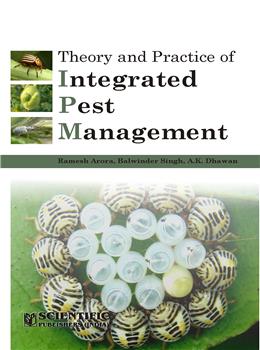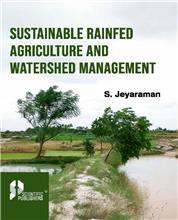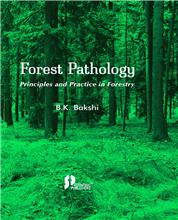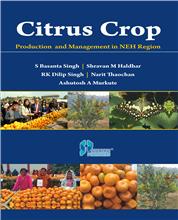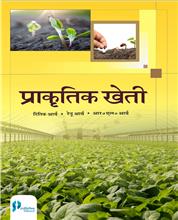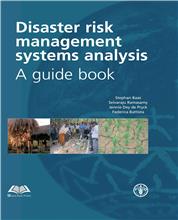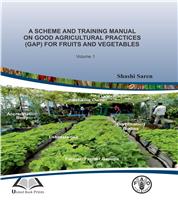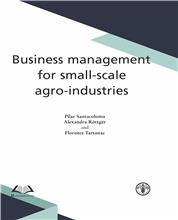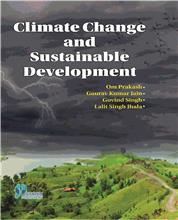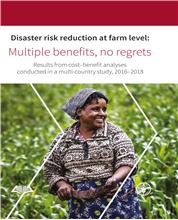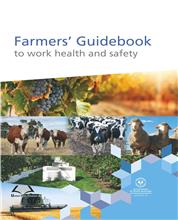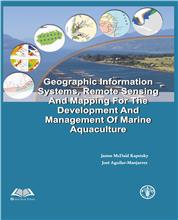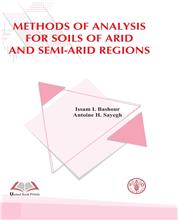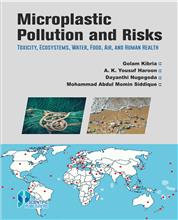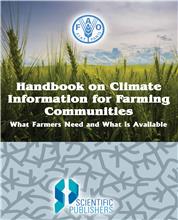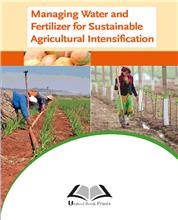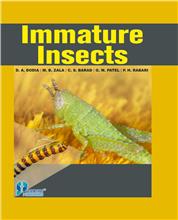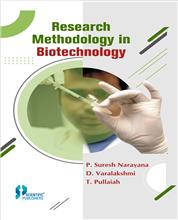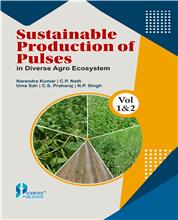1. Integrated Pest Management: Concept and Approaches Ramesh Arora and A.K. Dhawan
1.1. Historical Perspective
1.2. Definitions of IPM
1.3. Essential Prerequisites for IPM
1.4. Framework of IPM
1.5. Decision Making Systems
1.6. Implementation
1.7. Perspectives in IPM
1.8. Potential of IPM
2. Factors Affecting Insect-Pest Populations P.S. Sarao and M.S. Mahal
2.1. Abiotic Factors
2.1.1. Temperature
2.1.2. Moisture
2.1.3. Rainfall
2.1.4. Light
2.1.5. Photoperiodicity
2.1.6. Wind
2.2. Biotic Factors
2.2.1. Food
2.2.2. Natural enemies
2.3. Conclusion
3. Construction of Life-Tables for Insect Species M.S. Mahal
3.1. Introduction
3.2. Construction of Life-Table
3.3. Field Life-Table
3.4. Laboratory Life-Table
4. Coevolution of Insects and Plants Ramesh Arora
4.1. Introduction
4.2. Concept of Coevolution
4.3. Host Plant Defense Strategies
4.4. Strategies of Insects to Overcome Plant Defenses
4.5. Theories of Insect-Plant Coevolution
4.6. Examples of Coevolution
4.7. Conclusions
5. Role of Pesticides in Management of Crop Pests Balwinder Singh
5.1. Losses due to Pests
5.2. Pesticide Development: Historical Perspective
5.3. Global Pesticide Consumption Patterns
5.4. Consumption of Pesticides in Punjab and India
5.5. Problems Associated with Pesticides
5.6. Conclusions
6. Molecular Approaches in Entomological Research V.K. Gupta and Vikas Jindal
6.1. Introduction
6.2. Molecular Diagnostics/Markers
6.3. Molecular Analysis
6.4. Understanding Gene Functions-RNA Interference Technology
6.5. Conclusions
7. Potential of Insect Growth Regulators in Insect Pest Management Gursharan Singh and K.S. Suri
7.1. Insect Hormones
7.2. Chitin Synthesis Inhibitors (CSIs)
7.3. Future Prospects
8. Botanical Pesticides in Insect Pest Management Naveen Aggarwal
8.1. Introduction
8.2. Current Botanicals in Use
8.2.1. Pyrethrum
8.2.2. Neem
8.2.3. Plant essential oils
8.2.4. Rotenone
8.2.5. Sabadilla
8.2.6. Ryania
8.2.7. Nicotine
8.3. Potential New Botanicals
8.4. Limitations of Botanical Pesticides
8.5. Future Prospects
9. Pesticide Resistance: Monitoring, Mechanism and Management B.K. Kang
9.1. Current Status
9.2. Biochemical Mechanisms
9.3. Management Strategies
9.4. Conclusions
10. Recent Developments in Pesticide Formulation Technology P.S. Shera and Ramesh Arora
10.1. Objectives of Pesticide Formulation
10.2. Formulation Types and Codes
10.3. Current Trends in Pesticide Formulation Technology
10.4. New Generation Pesticide Formulations
10.4.1.Suspension concentrates
10.4.2. Emulsions
10.4.3. Suspo-Emulisons
10.4.4. Water dispersible granules
10.4.5. Microemulsions
10.4.6. Non-aqueous suspension concentrates
10.4.7. Controlled release formulations
10.4.8. Gel formulations
10.4.9. Seed treatment formulations
10.5. Conclusions
11. Pesticide Application Equipment I.P.S. Sandhu
11.1. Introduction
11.2. Particle Size in Relation to Effectiveness
11.3. Ground Application of Insecticides
11.4. Types of Sprayers
11.4.1. Manually operated equipment
11.4.2. Battery operated sprayers
11.4.3. Power operated equipment
11.4.4. Setting sprayer for given feed rate of liquid chemical
11.5. Dusters
11.6. Pumps for Spraying
11.7. Nozzles
11.8. Agitators for Chemicals
11.9. Seed Treatment Equipment
11.10. Safety Measures
12. Role of Entomopathogenic nematodes in Insect Pest Management Naveen Aggarwal
12.1. Introduction
12.2. Biogeographic Distribution
12.3. Biology
12.4. Host Range and Ecological Considerations
12.5. Mass Production Technology
12.6. Formulations
12.7. Application Technology
12.8. Successful Stories of EPNs against Agricultural Pests
12.9. Safety and Regulatory Procedures
12.10. Status of EPNs in India
12.11. Conclusions
13. Implications of Biotype Development in Host Plant Resistance D.R. Sharma and R.S. Gill
13.1. Introduction
13.2. Categories of Biotypes
13.3. Distribution of Biotypes
13.4. Development of Biotypes
14. Role of Insect Surveillance in Integrated Pest Management D.S. Brar and Vijay Kumar
14.1. Surveillance
14.2. Economic Threshold Levels
14.3. Status of Pest Survey/Surveillance
14.4. Conclusion
15. Role of Insect-Pest Forecasting in Integrated Pest Management M.S. Mahal, Beant Singh, P.S. Sarao and Sandeep Singh
15.1. Introduction
15.2. Pre-requisite for the Development of Forecasting Models
15.3. Modelling of Pest Populations
15.4. Pest Forewarning Models
15.5. Conclusions
16. Information Technology in Integrated Pest Management A.K. Dhawan, G.K. Taggar and R.S. Gill
16.1. Introduction
16.2. Web-Based Interactive Systems
16.3. Information Technology-Aided IPM Decisions Making
16.4. Applications of Decision Support Systems (DSS) in Insect Pest Management
16.5. Applications of Expert Systems (EXS) in Insect Pest Management
16.6. Application of Expert Support Systems (ESS) in Insect Pest management
16.7. Conclusion
17. Management of Insect Pests of Cotton: Retrospect and Prospect A.K. Dhawan, Vijay Kumar and P.S. Shera
17.1. Introduction
17.2. Changing Insect Pest Scenario
17.3. Management Options
17.3.1. Varietal resistance
17.3.2. Cultural, mechanical and physical control
17.3.3. Behavioural/biorational methods
17.3.4. Microbial control
17.3.5. Biological control
17.3.6. Botanical pesticides
17.3.7. Chemical control
17.3.8. Integrated pest management
17.3.9. Insecticide resistance management
17.4. Future Management Strategies
18. Integrated Management of Insect-Pests in Rice P.S. Sarao and M.S. Mahal
18.1. Introduction
18.2. Components of IPM
18.2.1. Varietal resistance
18.2.2. Cultural methods
18.2.3. Biological control
18.2.4. Behaviour modifying chemicals
18.2.5. Chemical control
18.2.6. Botanicals
18.2.7. Biopesticides
18.3. Conclusions
19. Emerging Technologies for Integrated Pest Management in Forage Crops Ramesh Arora
19.1. Losses Caused by Insect Pests
19.2. Gram Caterpillar
19.3. Stem Borer
19.4. Sorghum Shoot fly
19.5. Cabbage Semi-looper
19.6. Bihar Hairy Caterpillar
19.7. Lucerne Weevil
19.8. Grasshoppers
19.9. Sorghum Midge
19.10. Aphids
19.11. Blister Beetle
19.12. Chafer Beetles
19.13. Sugarcane Leafhopper
19.14. Jassids
19.15. Thrips
19.16. Leaf-miners
19.17. Alfalfa Seed Chalcid
19.18. Future Research Needs
20. Management of Insect Pest Complex in Maiz Vijay Kumar and Uma Kanta
20.1. Introduction
20.2. Stem Borer
20.3. Pink Stem Borer
20.4. Shoot Fly or Stem Fly
20.5. Armyworm
20.6. Corn Earworm
20.7. Hairy Caterpillar/Silk Cutter
20.8. Cutworm
20.9. Climbing Cutworm
20.10. Sugarcane Leaf Hopper or Pyrilla
20.11. Maize Jassid
20.12. Cereal Thrips
20.13. Cotton Grey Weevil
20.14. Pentatomid Bug
20.15. Phadka Grasshopper
21. Changing Scenario of Insect Pests of Wheat and their Management Beant Singh
21.1. Termites or White Ants
21.2. Aphids
21.3. Armyworm
21.4. American Pod Borer
21.5. Pink Stem Borer
21.6. Brown Wheat Mite
21.7. Root Aphid
22. Management of Insect Pests in Citrus P.K. Arora and D.R. Sharma
22.1. Citrus Psylla
22.2. Citrus Leafminer
22.3. Whitefly Complex
22.4. Mealy Bugs
22.5. Citrus Aphids
22.6. Citrus Thrips
22.7. Lemon Caterpillar
22.8. Fruit Sucking Moth
22.9. Fruit Fly
22.10. California Red Scale
22.11. Citrus Leaf-Folder
22.12. Bark Caterpillar
22.13. American Bollworm
22.14. Conclusions
23. Management of Insect Pests in Fruit Crops other than Citrus D.R. Sharma, P.K. Arora and Sandeep Singh
23.1. Introduction
23.2. Cultural Control
23.3. Mechanical and Physical Control
23.4. Biological Control
23.5. Plant Resistance
23.6. Reproductive or Autocidal Control
23.7. Regulatory Control
23.8. Chemical Control
23.9. Conclusion
24. Management of Insect Pests of Vegetable Crops in Net House Sandeep Kaur
24.1. Introduction
24.2. Physical Control
24.3. Cultural Control
24.4. Mechanical Control
24.5. Biological Control
24.6. Botanical Control
25. Management of Insect Pests of Oilseeds Crops Sarwan Kumar
25.1. Rapeseed-Mustard
25.2. Sunflower
25.3. Groundnut
25.4. Sesamum
25.5. Linseed
25.6. Technology Transfer in Oilseeds
26. Integrated Management of Insect Pests of Rabi Pulses G.K. Taggar and Ravinder Singh
26.1. Insect Pest Problems in Chickpea
26.2. Insect Pest Problems in Lentil
26.3. Insect Pest Problems in Field Peas
26.4. Conclusions
27. Integrated Pest Management in Kharif Pulses Ravinder Singh, G.K. Taggar and H.K. Cheema
27.1. Losses Caused by Key Insect Pests
27.2. Whitefly
27.3. Green Jassid
27.4. Tobacco Caterpillar
27.5. Bihar hairy Caterpillar
27.6. Green Semilooper
27.7. Bean Mite
27.8. Gram Pod Borer
27.9. Tur Pod Fly
27.10. Legume Pod Borer
27.11. Pea blue Butterfly
27.12. Plume Moth
27.13. Leaf Binder
27.14. Pod bug or Green Bean Bug
27.15. Blister Beetle
27.16. Future Research Needs
27.17. Constraints and Policies in Adoption of IPM in Pulses
28. Pest Management in Jute and Mesta T. Ramasubramanian and S. Satpathy
28.1. Introduction
28.2. Pest Management in Jute
28.3. Pest Management in Mesta
28.4. Future Strategies
29. Management of Insect Pests of Tobacco A.D. Patel, D.M. Mehta and L.V. Ghetiya
29.1. Introduction
29.2. Soil Pests
29.3. Above-Ground Pests
29.4. Storage Pest
29.5. Tobacco in Pest Management
